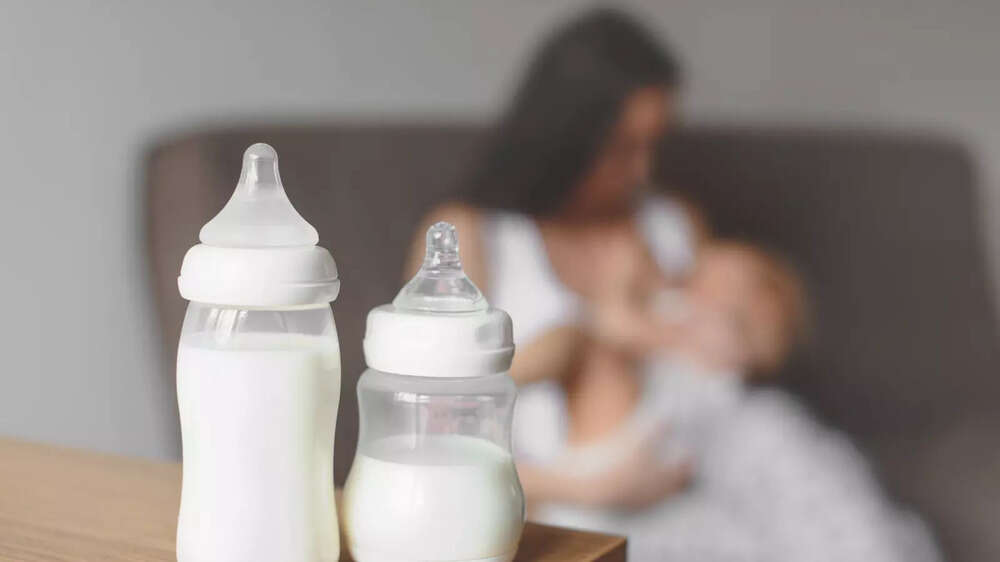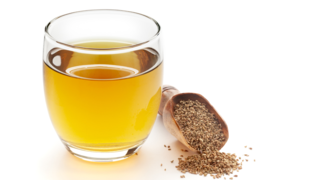In this article:
You might be thinking about how to store mixed feeds, how long they last, and whether your baby will still get all the benefits of breast milk. Before making changes to your baby’s feeding routine, it helps to understand the basic guidelines and what health experts recommend.
Is Mixing Breast Milk and Formula Safe?
Yes, mixing breast milk and formula in the same bottle is generally safe if done correctly. Health professionals confirm there’s no harm to your baby as long as you follow proper preparation guidelines. The key is to prepare the formula according to the manufacturer’s instructions before combining it with breast milk. This helps maintain the right nutritional balance and avoids potential health risks.Why Parents Choose to Mix Breast Milk and Formula
These are the main reasons parents opt for this approach:- Low milk supply: Formula can ensure your baby gets enough calories if you’re struggling to produce enough breast milk. Issues like hormonal changes, previous breast surgeries, or certain medications can affect supply.
- Feeding multiples: Twins or more can demand more milk than your body can produce, leaving you exhausted. Formula can help meet their needs while giving you a break.
- Returning to work or travel: If pumping at work or during travel isn’t feasible, formula can be used during the day while you breastfeed when you’re home.
- Needing a break: Breastfeeding can be demanding. Formula allows partners or caregivers to share feeding duties and give you time to rest or focus on self-care.
- Supporting mental health: Some parents find that combining feeding methods helps them manage stress or resume medications paused during pregnancy.
- Easing weaning: Mixing breast milk with formula can help transition your baby gradually if you’re moving away from breastfeeding.
- Premature babies: Preterm infants may need formula with special additives alongside breast milk to support their growth.
- Adoption or surrogacy: Non-lactating parents may combine donor milk with formula to feed their baby.
How to Mix Breast Milk and Formula Safely
Follow these steps carefully to mix breast milk and formula safely:- Prepare formula first: If using powdered or concentrated formula, mix it with the correct amount of safe drinking water as per the package instructions. Never use breast milk instead of water, as this can disrupt the formula’s nutrient balance and harm your baby’s kidneys or digestion.
- Add breast milk: Once the formula is prepared and cooled, add the desired amount of expressed breast milk to the bottle. For ready-to-feed liquid formula, simply pour it into the bottle with breast milk.
- Mix gently: Stir the mixture gently to combine. Avoid shaking vigorously to prevent breaking down breast milk’s nutrients.
- Check formula expiry: Always verify the “use by” date on the formula to ensure it’s safe.
- Sterilise equipment: Clean and sterilise bottles, pump parts, and other feeding supplies to prevent bacterial growth.
- Start with a 1:1 ratio: A common starting point is equal parts breast milk and formula, but consult your paediatrician to adjust based on your baby’s needs.
- Monitor your baby: Watch for signs of intolerance, such as excessive gas or discomfort. Consult a professional if issues arise.
Benefits of Mixing Breast Milk and Formula
Combining breast milk and formula offers several advantages for you and your baby:- Retains breast milk benefits: Your baby still gets antibodies, enzymes, and nutrients from breast milk that help prevent infections and reduce inflammation.
- Ensures adequate nutrition: Formula provides essential vitamins, minerals, and calories, supporting healthy growth if breast milk alone isn’t enough.
- Helps with taste transition: Mixing can help your baby adjust to formula’s taste, which differs from breast milk.
- Promotes longer satiety: Formula takes longer to digest and allows your baby to go longer between feeds, especially at night.
- Supports flexible schedules: It allows caregivers to feed your baby when you’re unavailable.
- Reduces pressure: Combination feeding can ease the stress of exclusive breastfeeding and support your mental health.
Risks of Mixing Breast Milk and Formula
Combination feeding is only safe when done correctly. There are some risks and downsides to be aware of:- Wasted breast milk: You may lose precious breast milk if your baby doesn’t finish a mixed bottle. To avoid this, consider offering breast milk first, then formula if they’re still hungry.
- Reduced milk supply: Breastfeeding works on supply and demand. Using formula may reduce how often you breastfeed or pump and lower your milk supply over time.
- Shorter shelf life: A bottle of breast milk mixed with formula must be used within one hour at room temperature or 24 hours in the fridge. This is shorter than the storage time for breast milk alone.
- Potential allergies: Some babies are allergic to cow’s milk or soy proteins in formula, or to foods in a lactating parent’s diet. Mixing can make it harder to identify the cause of a reaction.
- Improper mixing risks: If you use breast milk instead of water to mix formula powder, it can make the formula too concentrated. This changes the balance of nutrients and may not be safe for your baby’s kidneys and digestion.
Storage Guidelines for Breast Milk and Formula
Proper storage is crucial to keep breast milk and formula safe. Follow these guidelines:Breast Milk
- Freshly pumped: Up to 4 days in the fridge or 6 months in the freezer.
- At room temperature: Safe for 4 to 6 hours.
- In an insulated cooler: Up to 24 hours.
Prepared Formula
- Refrigerated: Use within 24 hours.
- At room temperature: Use within 2 hours.
- Frozen: Freezing formula is not recommended.
Mixed Breast Milk and Formula
- Refrigerated: Use within 24 hours.
- At room temperature: Discard after 1 hour from the start of feeding to prevent bacterial growth.
Tips for Successful Combination Feeding
Consider these practical tips to make combination feeding work smoothly:- Consult a professional: Speak with a paediatrician or lactation consultant before starting to know the right feeding plan for your baby’s needs.
- Introduce gradually: Slowly adjust breastfeeding sessions and formula amounts to help your baby adapt and maintain your milk supply.
- Monitor feeding cues: Watch for signs your baby is full or still hungry to avoid over or under-feeding.
- Separate bottles if needed: If wasting breast milk is a concern, offer breast milk first, then formula in a separate bottle.
- Maintain milk supply: Pump regularly to stimulate milk production when formula is used if you want to keep breastfeeding.
FAQs on Is it Safe to Mix Breast Milk and Formula?
- Can I use breast milk instead of water to mix formula powder?
No, formula must be prepared with water first. Using breast milk instead of water can make the feed too concentrated, which may harm your baby’s kidneys and digestion. - How long can I store a bottle of mixed breast milk and formula?
Use it within one hour from the start of feeding if kept at room temperature. In the fridge, it can be stored for up to 24 hours. Always discard leftovers after feeding.






